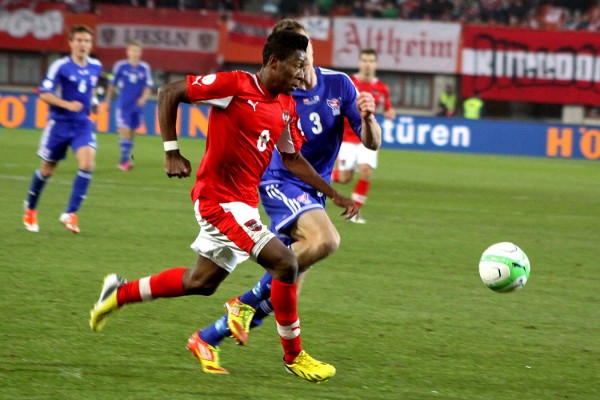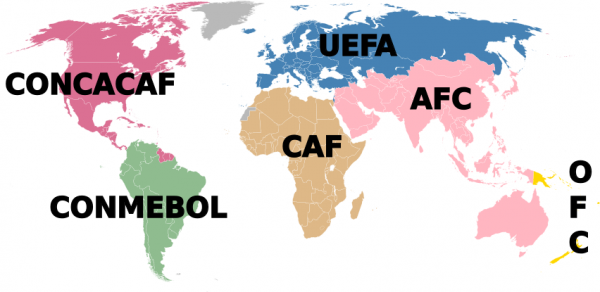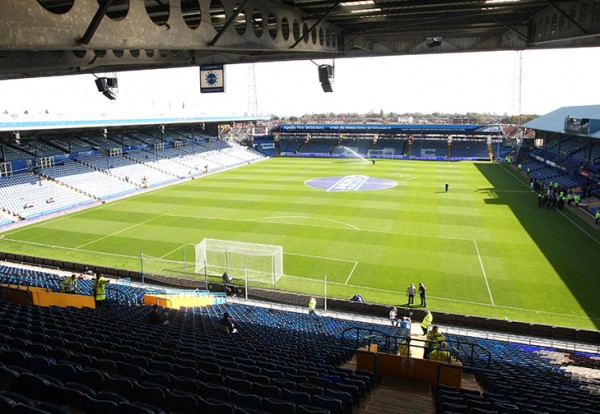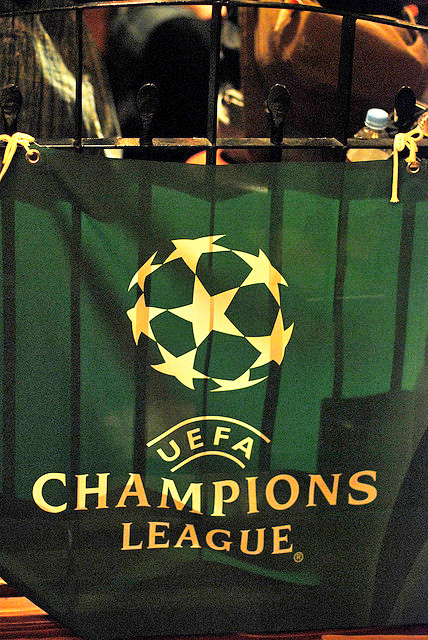 Earlier this week FIFA, the world governing body of football, announced plans to expand the World Cup from 32 to 48 teams starting in 2026. It is fair to say that this has been met with mixed reactions, in part due to the politics and money involved. However, for an economist one particularly interesting question is how the change will affect the incentives of the teams taking part in the competition.
Earlier this week FIFA, the world governing body of football, announced plans to expand the World Cup from 32 to 48 teams starting in 2026. It is fair to say that this has been met with mixed reactions, in part due to the politics and money involved. However, for an economist one particularly interesting question is how the change will affect the incentives of the teams taking part in the competition.
As a result of the change in the first stage of the competition, teams will be play the two other teams in their group. The best two teams in the group will then progress to the next round with the worst team going home. This is in contrast to the current format where the best two teams from a group of four go through to the next round.
Currently, in the final round of group matches all four of the teams in the group play simultaneously. However, an immediate implication of the new format is that this will no longer be the case. Instead, one of the teams will have finished their group matches before the other two teams play each other. This could have important implications for the incentives of the teams involved. To see this we can recall a very famous match played under similar circumstances between West Germany and Austria at the 1982 World Cup.
 The results of the earlier group games meant that if West Germany beat Austria by one or two goals to nil both teams would progress to the next round. Any other result would mean that Algeria progressed at the expense of one of these two teams. The way in which the match played out was that West Germany scored early on and much of the rest of the game descended into farce. Both teams refused to attack or tackle their opponents, as they had no incentive to so (see here for some clips of the action, or lack of!).
The results of the earlier group games meant that if West Germany beat Austria by one or two goals to nil both teams would progress to the next round. Any other result would mean that Algeria progressed at the expense of one of these two teams. The way in which the match played out was that West Germany scored early on and much of the rest of the game descended into farce. Both teams refused to attack or tackle their opponents, as they had no incentive to so (see here for some clips of the action, or lack of!).
There is no evidence to suggest that West Germany and Austria had come to a formal agreement to do this. Instead, the two teams appear to have simply had a mutual understanding that refraining from competing would be beneficial for both of them.
This is exactly what economists refer to as tacit collusion – a mutual understanding that refraining from competition and keeping prices high benefits all firms in the market. Much like the fans who had to sit through the farce of a game (you can hear the frustration of the crowd in the video clip linked to above), the end result is harm to consumers who have to pay the higher prices or go without the product.
For this reason governments use competition policy to try to stop situations arising in markets that make the possibility of tacit collusion more likely. One way in which this is done is by preventing mergers in markets where tacit collusion appears possible and would be facilitated by the reduction in the number of firms as a result of the merger. The equivalent for the World Cup would be preventing a change in the format of the competition.
An alternative approach is to tinker with the rules of the game in order to make collusion harder. FIFA seems to have some awareness of the possibility of doing this as it is suggesting that it may require all tied games to extra-time and then a penalty shoot-out in order to determine a winner. Clearly, this would go at least some way to alleviating concerns about tacit collusion in the final group matches because coordinating on a draw would no longer be possible. In a similar fashion, competition authorities can also intervene in markets to change the rules of the game (see for example the recent intervention in the UK cement industry).
Therefore, more generally, the World Cup example highlights the fact that variations in the structure of markets and the rules of the game can have significant effects on firms’ incentives and this can have important consequences for market outcomes. It will certainly be fascinating to see what rules are imposed for the 2026 World Cup and how the teams taking part respond.
Articles
World Cup: Fifa to expand competition to 48 teams after vote BBC News (10/1/17)
How will a 48-team World Cup work? Fifa’s plan for 2026 explained The Guardian, Paul MacInnes (10/1/17)
The Disgrace of Gijón and the 48-team FIFA World Cup Mike or the Don (12/1/17)
Questions
- What is the difference between tacit collusion and a cartel?
- Why does a reduction in the number of firms in a market make collusion easier?
- What other factors make collusion more likely?
- How does competition policy try to prevent the different forms of collusion?
 As was discussed on this blog, the rights to broadcast live Premier League football matches in the UK were recently auctioned off for a staggering £1.7bn per season. In the Premier League all of the clubs join forces to sell the rights collectively.
As was discussed on this blog, the rights to broadcast live Premier League football matches in the UK were recently auctioned off for a staggering £1.7bn per season. In the Premier League all of the clubs join forces to sell the rights collectively.
On the face of it, this collective selling would appear to be a potential breach of competition laws that prevents agreements between firms. However, despite some concerns and complaints, collective selling of football TV rights has been allowed, firstly because it is argued that it results in a more equal distribution of income amongst clubs, thus enhancing competitive balance and resulting in a more attractive product for the fans; secondly, because some of the revenue raised is redistributed down the football pyramid to lower league clubs.
In contrast to the Premier League, in Spain the clubs have traditionally sold their rights individually. This has been regarded as a significant advantage for the Spanish giants, Barcelona and Real Madrid.
 For the 2013–14 season in total clubs in the top division in Spain earned substantially less than their counterparts in England. However, Barcelona and Real Madrid earned around 1/3 of the total and more than any club in England, whereas the league winners that year, Atletico Madrid, earned only around half that of Cardiff City which finished bottom of the Premier League. Despite this, it is interesting to note that, at least in terms of league winners, the Spanish league has been more competitive than the German league despite the rights being sold collectively in the latter.
For the 2013–14 season in total clubs in the top division in Spain earned substantially less than their counterparts in England. However, Barcelona and Real Madrid earned around 1/3 of the total and more than any club in England, whereas the league winners that year, Atletico Madrid, earned only around half that of Cardiff City which finished bottom of the Premier League. Despite this, it is interesting to note that, at least in terms of league winners, the Spanish league has been more competitive than the German league despite the rights being sold collectively in the latter.
However, the way in which the rights are sold in Spain may be about to change. A few weeks ago, following pressure from the majority of clubs, the Spanish government approved a law that will introduce collective selling. The sport ministry spokesman described this change as allowing Spanish football to ‘adopt to modern times’.
It has been reported that there is a clause in the legislation that guarantees all clubs an increase in revenues above what they currently earn from selling their TV rights individually. This may have been essential to persuade the larger clubs, in particular Barcelona and Real Madrid, to support the new legislation.
The change in legislation still needs to be cleared by the Spanish parliament and there has been a threat of strike action. It is also unclear how the clause described above might affect the standing of the collective agreement under competition law.
Assuming the change does go ahead, it will be interesting to see how much the subsequent collective sale of TV rights raises. One estimate suggests a significant increase, but still much less than in the Premier League. Even more fascinating will be in the longer term to see what knock-on effect this has on the degree of competitive balance in the league.
Barcelona back collective TV rights in La Liga City a.m., Joe Hall (04/08/14)
Is the balance of power in Spain’s La Liga set to change after historic TV rights change Sport.co.uk, Jason King (02/05/15)
Court suspends Spanish football strike Financial Times, Tobias Buck (14/05/15)
Questions
- Why does competition policy typically prohibit agreements between firms?
- Do you think collective selling will always have a significant effect on the degree of competitive balance in a sports league? What other factors are likely to be important?
- Assuming the new legislation goes ahead, how do you think Spanish football will change?
- Can you think of any other situations where agreements between firms may be beneficial?
 The draw for the lucrative group stages of the Champions League was made on Thursday 28th August. The 32 remaining clubs in the competition were allocated into eight groups of four teams. 74% percent of the respondents to a BBC survey thought that Manchester City had the toughest draw, while only 3.7% thought that Chelsea had the hardest draw. How did the Premier League champions end up in a much tougher group than the teams that finished in 3rd and 4th place? Was it purely by chance?
The draw for the lucrative group stages of the Champions League was made on Thursday 28th August. The 32 remaining clubs in the competition were allocated into eight groups of four teams. 74% percent of the respondents to a BBC survey thought that Manchester City had the toughest draw, while only 3.7% thought that Chelsea had the hardest draw. How did the Premier League champions end up in a much tougher group than the teams that finished in 3rd and 4th place? Was it purely by chance?
The unpredictability of a sporting contest depends not only on differences in the talent/motivation of the participants involved, but also on how the contest is designed and structured. The Champions League is an interesting case. The title of the competition would suggest that the participating clubs are all league champions from the 54 football associations spread across Europe. However, out of the 32 clubs which made it to the group stage, only 18 were actually the champions of their own domestic league.
22 teams automatically qualify for the group stages, while the other ten qualify via a knock-out stage of the competition. Of the 22 teams which gain automatic qualification only thirteen are league champions. The other nine places are allocated to teams which finished either 2nd or 3rd in their domestic leagues.
The inclusion of teams which did not win their domestic league occurs because UEFA allocates places in the Champions League by ranking the sporting performance of the 54 different football associations in Europe. This measure of performance, known as a Country’s Coefficient, is based on the results of the teams from each football association in both the Champions League and Europa League over the previous five years. If UEFA ranks a football association in one of the top three positions, then the teams that finish 1st , 2nd and 3rd in those leagues automatically qualify for the group stage of the Champions League. England is currently ranked in 2nd place behind Spain, which explains why Chelsea, which finished 3rd in the Premier League, obtained automatic qualification. The teams that finished 4th in these three top ranked leagues also gain entry to the final knock-out round of the competition. This is how Arsenal gained qualification for the group stage by narrowly defeating Besiktas from the Turkish League.
Teams from the lower ranked football associations have to win through more knock-out games in order to reach the lucrative group stage. For example the league champions from the bottom six countries (Faroe Islands, Wales, Armenia, Andorra, San Marino and Gibraltar) would have to win through four two-leg knock-out games. The league champions from Scotland would have to win through three as their football association is ranked in 24th place.
A draw takes place in order to allocate the remaining 32 teams to the leagues in the group stages. It is interesting how this allocation occurs because it is not a completely random process. UEFA ranks individual teams as well as countries. Real Madrid is currently ranked in 1st place while Port Talbot Town from the Welsh league is in 449th place. The top eight ranked teams still left in the competition are placed in pot 1, the 9th to 16th ranked clubs are placed in pot 2 and so on. One team from each pot is then drawn out at random and placed in a group. Therefore each group contains one club from pot 1, 1 club from pot 2, 1 club from pot 3 and 1 from pot 4.
The problem for Manchester City is that the seeding of each team is predominately determined by its performance in the Champions and Europa league over the previous five years. Once a team has made it to the group stages, its performance in its own domestic league has no impact on how it is seeded. This means that although Arsenal only finished 4th in the Premier League, it is placed in pot 1 for the draw because of its results in the Champions League over the previous five years. It therefore avoids the other top seeded clubs such as Real Madrid, Barcelona and Bayern Munich. Chelsea is also in pot 1, so was also more likely to get a favourable draw. Manchester City was seeded in pot 2 because it had only been in the Champions League for the last three years, so had not accumulated as many points as the teams who have been in the competition for longer.
Unfortunately for Manchester City, it was drawn in the same group as one of the strongest pot 1 teams – Bayern Munich. It was also unlucky to end up with one of the strongest teams in pot 4. Roma was runners up in the Italian league so was given an automatic place in the group stage. However it received a relatively low seeding as it is the first time it has been in the Champions league since 2010–11.
How much does the seeding matter? Since 1999–2000, when the group stage was expanded to 32 clubs, 86% of the top seeded teams have successfully qualified from the group stage into the last 16. Eleven of the last 16 winners were also from pot 1.
Articles
UEFA Rankings – Club coefficients 2014/15 UEFA (29/8/14)
UEFA Rankings – Country coefficients 2014/15 UEFA (29/8/14)
UEFA Rankings – Coefficients Overview UEFA (29/8/14)
Explained: The UEFA Champions League draw The Indian Empress (28/8/14)
Questions
- Uefa awards ranking points to teams based on their sporting performance. For example teams receive two ranking points for a victory against any team. This is different from the system used to rank national teams where the quality of the team defeated also influences the number of points awarded. What impact would it have if more ranking points were awarded in the Champions League for victories against higher ranked clubs?
- The Uefa system for ranking countries and teams is based on performance in European competitions over the previous 5 years. The performance in each year is weighted equally. What impact might it have if victories from the previous year were more heavily weighted than those from 4 or 5 years ago?
- The draw for the group stages of the Champions League could be made using a completely random process without any seeding. What impact might this have on the amount of money that firms in England, Spain and Italy would be willing to pay to secure the media rights?
- Can you think of any other elements of the design of the tournament that might have an impact on the predictability of the outcome?
 With the new Premier League football season only a week away, TV companies are heavily advertising the matches they will be showing. Until recently, BSkyB, having seen off competition from Setanta and ESPN, appeared to have an untouchable position in this market. However, competition now appears to be intensifying.
With the new Premier League football season only a week away, TV companies are heavily advertising the matches they will be showing. Until recently, BSkyB, having seen off competition from Setanta and ESPN, appeared to have an untouchable position in this market. However, competition now appears to be intensifying.
BT entered the market in 2012 by paying £738m for the rights to screen 38 Premier League matches a season for 3 seasons, with Sky showing another 116 matches. BT is clearly heavily backing its sports coverage with an initial outlay of £1.5b and them continuing to sign up high profile presenters and ambassadors including former players and a current manager.
Furthermore, BT dealt Sky (and ITV) a hefty blow last year when it outbid them to win the rights to exclusively show European club competition matches from 2015. Sky responded by saying that:
We bid with a clear view of what the rights are worth to us. It seems BT chose to pay far in excess of our valuation
If true, this would illustrate the winner’s curse which can arise in auctions. However, John Petter, chief executive of BT Retail, said that the deal demonstrated that BT Sport was committed to establishing itself in this market and countered Sky’s suggestion that they had overpaid by saying:
They would say that, wouldn’t they? Secretly, I’d expect them to be kicking themselves and full of regrets this morning
Clearly important to BT’s strategy is bundling its sports coverage in for free with their broadband packages. This is not without controversy since, at the same time as spending vast amounts of money to setup its sports coverage, BT is receiving large government subsidies to improve rural broadband provision.
An important forthcoming ruling from the Competition Appeal Tribunal will have a significant effect on how competition between BT and Sky develops. In this case Sky is accused of abusing its dominant position by refusing to supply BT’s YouView service with its sports channels at a reasonable wholesale price and could now be forced to do so.
It will also be fascinating to see how BT Sport’s strategy develops over time. BT is unlikely to continue  to provide all its coverage for free once it includes the European matches that it has won the rights to show at great expense. It will also be fascinating to see the extent to which it continues to have success in winning broadcasting rights in the future.
to provide all its coverage for free once it includes the European matches that it has won the rights to show at great expense. It will also be fascinating to see the extent to which it continues to have success in winning broadcasting rights in the future.
Competition will inevitably push up the amount that the Premier League raises in the next rights auction. Current predictions are that these will be sold for over £4bn, up from £3bn in the previous auction. This will increase the amount the Premier League clubs receive and is also likely to further push up player wages. It remains to be seen the extent to which this will benefit viewers, not to mention pubs wishing to show the games some of whom have in the past looked for alternative solutions because of the high prices they have to pay.
BT wins court battle forcing review of Sky wholesale pricing decision The Guardian, Mark Sweney (17/02/14)
BT Sport does little to lift BT TV homes informitv – connected vision (01/08/14)
BT Sport continues to invest in football line-up MediaWeek, Arif Durrani (29/07/14)
Questions
- What are the key characteristics of the market for sports broadcasting rights?
- What are the pros and cons for consumers of BT Sport’s emergence?
- How do you think Sky might respond to competition from BT Sport?
- How do you think BT Sport’s strategy might develop over time?
 As Leicester City celebrated promotion to the English Premier League (EPL) last Saturday (5th April) it also became the first club in England that will probably have to pay a new Financial Fair Play (FFP) Tax. This tax is not paid to the government, but is effectively a fine imposed by the English Football League (EFL) on teams who break FFP regulations.
As Leicester City celebrated promotion to the English Premier League (EPL) last Saturday (5th April) it also became the first club in England that will probably have to pay a new Financial Fair Play (FFP) Tax. This tax is not paid to the government, but is effectively a fine imposed by the English Football League (EFL) on teams who break FFP regulations.
On Tuesday 8th April 2014 representatives from all the Championship clubs met with officials from the English Football League (EFL) in order to discuss the implementation of FFP. It had been reported in February that a number of teams were unhappy about the implementation of the FFP rules and were threatening to take legal action against the league. Unsurprisingly, one of these clubs was rumoured to be Leicester City.
In April 2012, 21 out of the 24 clubs in the Championship agreed on a set of new FFP regulations. These rules place a limit on the size of any financial losses that a team can incur in a given season before punishments, such as a tax, are imposed on them. The English Football League (EFL) stated that the aim of the FFP regulations was to
reduce the levels of losses being incurred at some clubs and, over time, establish a league of financially self-sustaining professional football clubs.
Under the agreed set of rules, all teams in the Championship have to provide a set of annual accounts by 1st December for the previous season: i.e. the first reporting period was in December 2012, when clubs had to submit accounts for 2011–12. No penalties were applied for the first two reporting periods as teams were given time to adjust to the new FFP framework. However sanctions come into effect for the 2013–14 season.
For the 2013–14 season the FFP rules set a threshold of £3 million as the size of the pre-tax financial losses that a team can incur before having to face any sanctions. If a team incurs a pre-tax loss of greater than £3 million but less than £8 million then punishments from the league can be avoided if the team’s owner invests enough money into the club so that the loss is effectively limited to £3 million: i.e. if the club reports a loss of £7 million then the owner would have to invest a minimum of £4 million of his/her own cash to avoid any sanctions.
The club is not allowed to finance the loss by borrowing or adding to the level of the team’s debt. If the owner cannot/refuses to make the investment or the pre-tax loss is greater than £8 million then the team is subject to one of two possible sanctions depending on whether it is promoted or not.
First, if the club is not promoted to the EPL, then it is subject to a transfer ban from the 1st January 2015: i.e. it will be unable to sign new players at the start of the transfer window. The ban remains in place until the club is able to submit financial information that clearly shows that it is meeting the FFP guidelines.
Second, if the club is promoted to the EPL then instead of a transfer embargo it has to pay the FFP Tax. The amount of tax the firm has to pay to the league depends on the size of the financial loss it has incurred. The larger the loss, the greater the tax it has to pay. The marginal rate of tax also increases with the size of the loss.
 In order to help illustrate how the tax works it is useful to take a simple example. Leicester city reported a pre-tax loss of £34 million in 2012–13. If the club managed to reduce its pre-tax losses to £15 million in 2013–14 then, given its promotion, it would be subject to the tax. If we also assume that the owners are willing and able to invest £5 million of their own money into the club then the rate of tax the team would have to pay is based on the size of its losses over £8 million in the following way:
In order to help illustrate how the tax works it is useful to take a simple example. Leicester city reported a pre-tax loss of £34 million in 2012–13. If the club managed to reduce its pre-tax losses to £15 million in 2013–14 then, given its promotion, it would be subject to the tax. If we also assume that the owners are willing and able to invest £5 million of their own money into the club then the rate of tax the team would have to pay is based on the size of its losses over £8 million in the following way:
1% on losses between £8,000,001 and £8,100,000
20% on losses between £8,100,001 and £8,500,000
40% on losses between £8,500,001 and £9,000,000
60% on losses between £9,000,001 and £13,000,000
80% on losses between £13,000,001 and £18,000,000
100% on any losses over £18,000,000
Therefore with a loss of £15 million the FFP tax that Leicester would have to pay is £4,281,000 (£1,000 + £80,000 + £200,000 + £2.4million + £1.6million). If the club instead made a pre-tax financial loss of £30,000 in the 2013–14 season, then the FFP tax it would have to pay increases to £18,681,000 (£1,000 + £80,000 + £200,000 + £2.4million + £4 million + £12 million).
It was originally agreed that the revenue generated from the FFP tax would be shared equally by the teams in the Championship who managed to meet the FFP regulations. However the EPL objected to this provision and the money will now be donated to charity by the EFL.
Based on the financial results reported in 2012–13, about half the clubs in the Championship would be subject to either a transfer ban or FFP tax in January 2015. It was reported in the press in February that a number of clubs had instructed the solicitors, Brabners, to write to the EFL threatening legal action.
One particular concern was the ability of the clubs in the Championship subject to FFP rules to compete with teams relegated from the EPL. When the original FFP regulations were agreed, the teams relegated from the EPL received parachute payments of £48 million over a 4-year period. Following the record-breaking TV deal to broadcast EPL games, the payments were increased to £59 million for the 2013–14 season.
Following the meeting on Tuesday 8th April a spokesman from the EFL said
Considerable progress was achieved on potential improvements to the current regulations following a constructive debate between the clubs.
It will be interesting to see what changes are finally agreed and the implications they will have for the competitive balance of the league.
Articles
Why Championship clubs are crying foul over financial fair play The Guardian (26/2/14)
Wage bills result in big losses at Leicester City and Nottingham Forest The Guardian (5/3/14)
Financial fair play: Championship clubs make progress on talks BBC Sport (10/4/14)
Financial Fair Play in the Football League The Football League (25/4/12)
Loss leaders – Financial Fair Play Rules When Saturday Comes (25/4/12)
Richard Scudamore: financial fair play rules unsustainable in present form The Guardian (14/3/14)
Questions
- To what extent do you think that the implementation of the FFP regulations will either increase or decrease the competitive balance of the Championship?
- An article in the magazine ‘When Saturday Comes’ made the following statement “Last season’s champions, QPR, lost £25.4m and would have been handed a ‘tax’ of at least £17.4m based on 2013-14 thresholds”. Explain why this statement is not accurate. What mistake has the author made when trying to calculate the level of FFP tax payable?
- Nottingham Forest reported pre-tax financial losses of £17 million in 2012-13. If they made the same losses in 2013-14 and were promoted to the EPL, calculate how much FFP tax they would have to pay under current regulations.
- To what extent do you think that the money generated by the FFP tax should be equally distributed between the teams in the Championship who meet the FFP regulations.
- Why do you think team owners might need regulations to restrict the level of losses that they can make. Why might sport be different from other sectors?
 Earlier this week FIFA, the world governing body of football, announced plans to expand the World Cup from 32 to 48 teams starting in 2026. It is fair to say that this has been met with mixed reactions, in part due to the politics and money involved. However, for an economist one particularly interesting question is how the change will affect the incentives of the teams taking part in the competition.
Earlier this week FIFA, the world governing body of football, announced plans to expand the World Cup from 32 to 48 teams starting in 2026. It is fair to say that this has been met with mixed reactions, in part due to the politics and money involved. However, for an economist one particularly interesting question is how the change will affect the incentives of the teams taking part in the competition. The results of the earlier group games meant that if West Germany beat Austria by one or two goals to nil both teams would progress to the next round. Any other result would mean that Algeria progressed at the expense of one of these two teams. The way in which the match played out was that West Germany scored early on and much of the rest of the game descended into farce. Both teams refused to attack or tackle their opponents, as they had no incentive to so (see here for some clips of the action, or lack of!).
The results of the earlier group games meant that if West Germany beat Austria by one or two goals to nil both teams would progress to the next round. Any other result would mean that Algeria progressed at the expense of one of these two teams. The way in which the match played out was that West Germany scored early on and much of the rest of the game descended into farce. Both teams refused to attack or tackle their opponents, as they had no incentive to so (see here for some clips of the action, or lack of!).





